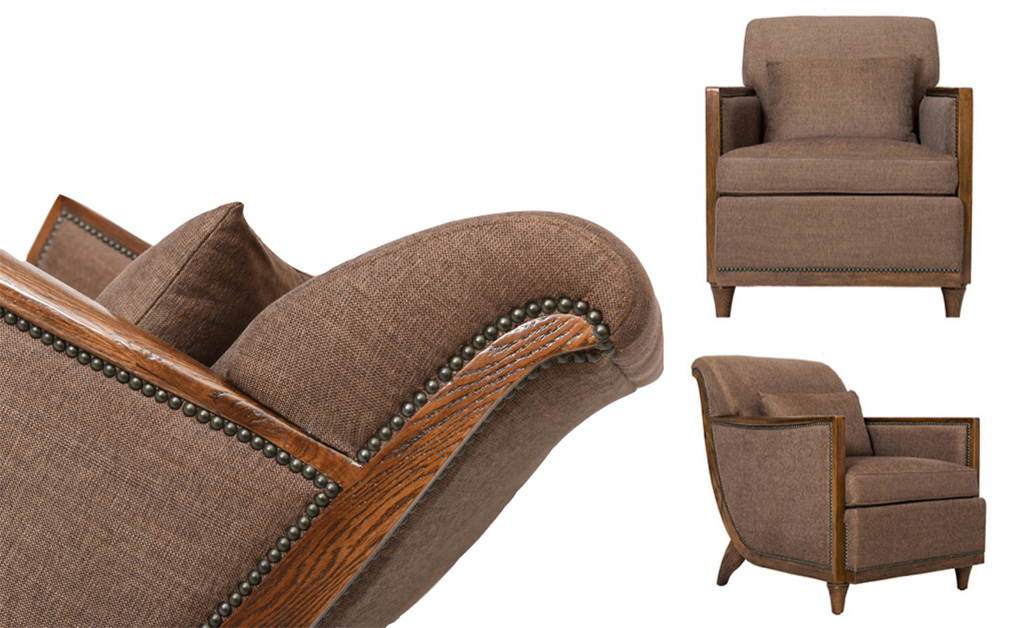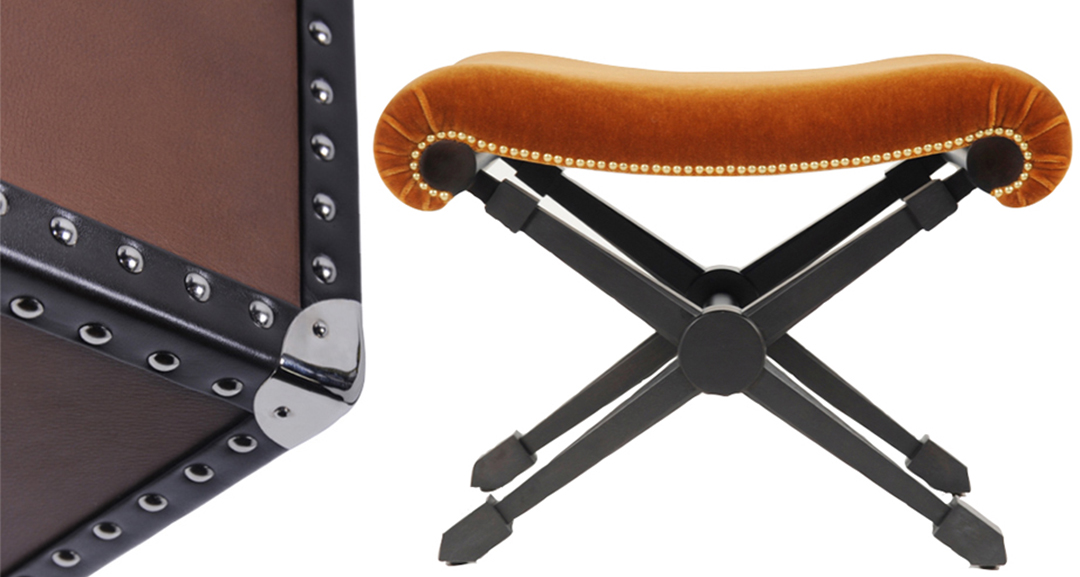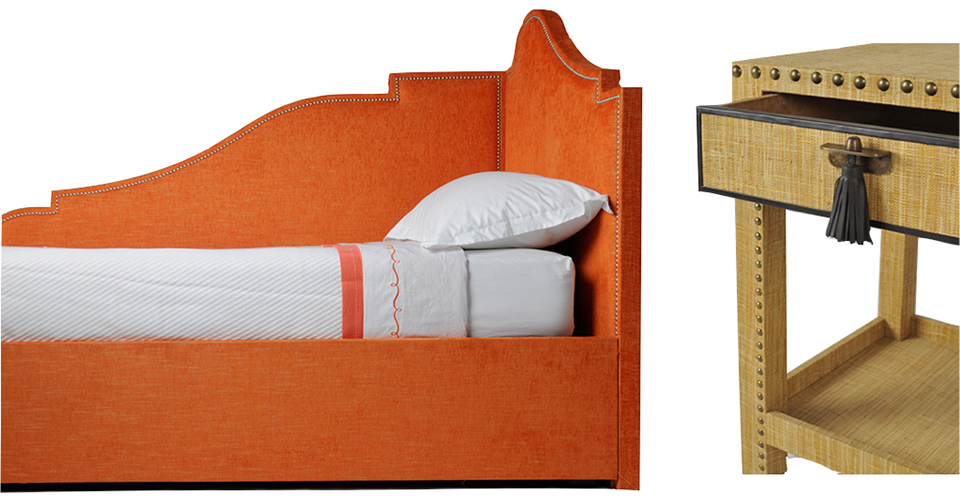The Lounge Chair (J25) is the cornerstone of Eric Brand’s award-winning Juniper collection. Inspired by the master furniture designer Émile-Jacques Ruhlmann, this piece pays homage to his impact on the Art Deco movement. The open pore oak frame is softened by a brushed canvas and finished with antique nailhead detailing – which we feel is the finishing touch that makes this chair truly distinct. But what makes nailhead detailing so special, and why has it continued to embellish interior design for so many eras?
Since the 15th and 16th centuries, trims such as gimp (braided trim) would be used by the upholsterer along with decorative nailheads traditionally made of brass or copper. Originally, these nailheads were mainly used to disguise the areas where the upholstery is tacked into wood frames – an attractive way of covering up the seams. Necessity is indeed the mother of invention.
However, it wasn’t until 17th century France that the nailhead technique was used on ornately- carved wooden seating with luxurious upholstery coverings such as brocade, velvet, tapestries and leather as an intended decorative feature. This use of nailheads as form-meets-function (or is it the inverse?) is said to have begun during the reign of Louis XIII.
The French Os de Mouton chair is the most well-known design from his reign (“Mouton” refers to sheep, because the shape of the chair legs resembled the legs of a lamb). The creation of this luxurious chair marked the beginning of using nailhead trim on upholstered backs and seats for furniture. Designers – and their customers – became infatuated and the rest is (literally) history.
Beyond the French influence, designing with nailhead was also favored with old Dutch, Spanish and English furnishings. Other notable examples include 1800’s famed English furniture designer William Morris and the American designers Stickley Brothers during the early 1900’s. Spanning decades and continents, they would all favor the medieval-style of nailhead trimming with leather and Baroque tapestry. This was certainly no passing fad.
Today you find nailhead trim on everything from clean simple silhouettes, to refined rustic pieces and even incorporated into industrial-style furnishings. Sofas, dining chairs, headboards, and kids rooms – it seems there is no limit to its versatility. Accentuating lines of design with classic sophistication, nailhead trim detailing will continue to add eye-catching distinction to the surfaces of our interiors as it has for hundreds of years. Beyond a functional technique, beyond a visual aesthetic, nailhead trim is also a time-honored tradition among those who appreciate it – an appreciation Eric Brand has most recently channeled into the Juniper Lounge Chair.


